Archive
https://archive.metromod.net/viewer.p/69/1470/object/5140-11259846
Archive
The Story of Art
- Book
- The Story of Art
Word Count: 4
- Ernst H. Gombrich
- 1950
- 1950
Phaidon Press Ltd, 1 Cromwell Place, South Kensington, London SW7.
- English
- London (GB)
The Story of Art by the émigré art historian Ernst H. Gombrich was published in 1950 with Phaidon Press. The book is a comprehensive and accessible introduction to visual culture.
Word Count: 29

Ernst Gombrich’s The Story of Art, published with Phaidon Press in 1950, cover (Photo: Private Archive). 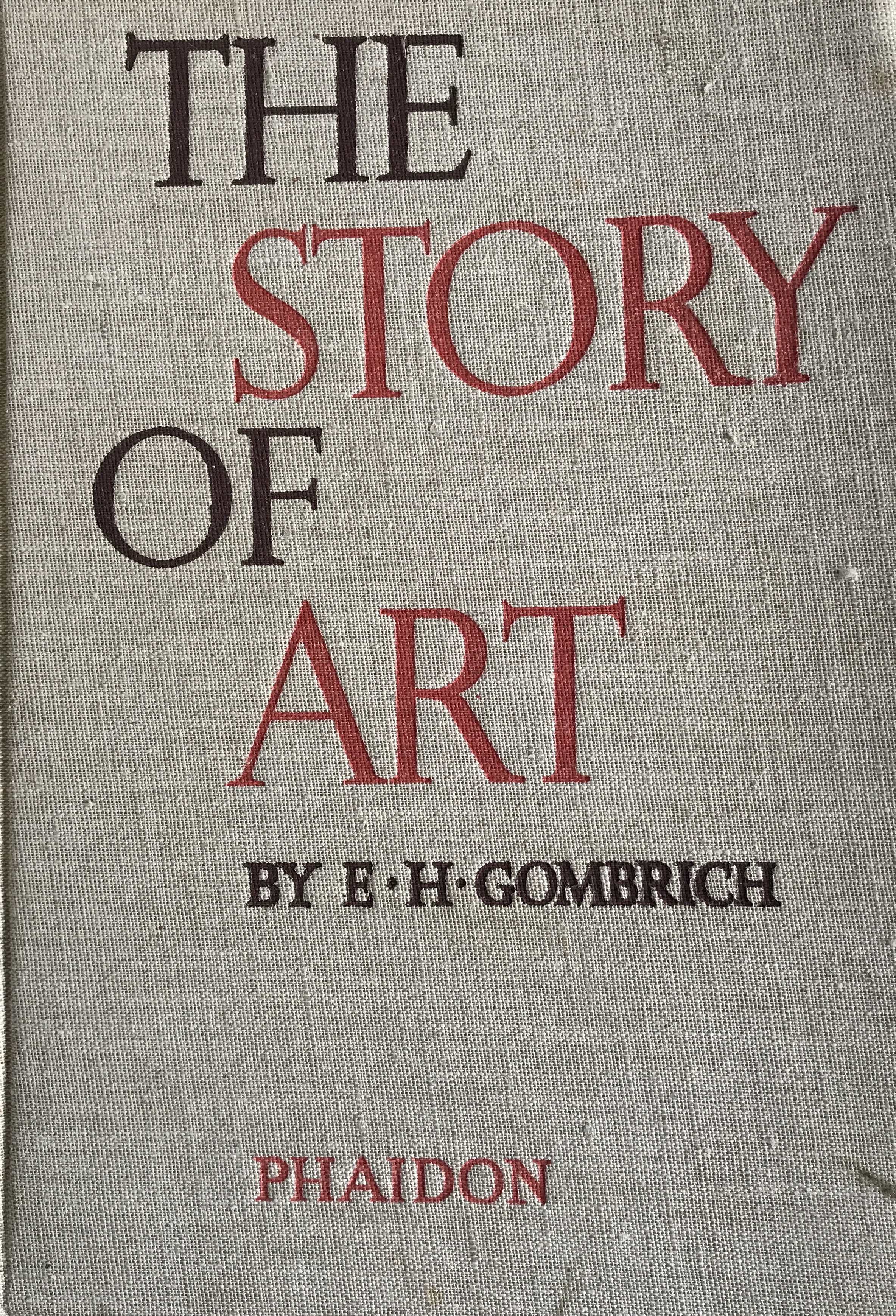
Ernst Gombrich’s The Story of Art, published with Phaidon Press in 1950, cover without dust jacket (Staats- und Universitätsbibliothek Bremen, photo: Private Archive). 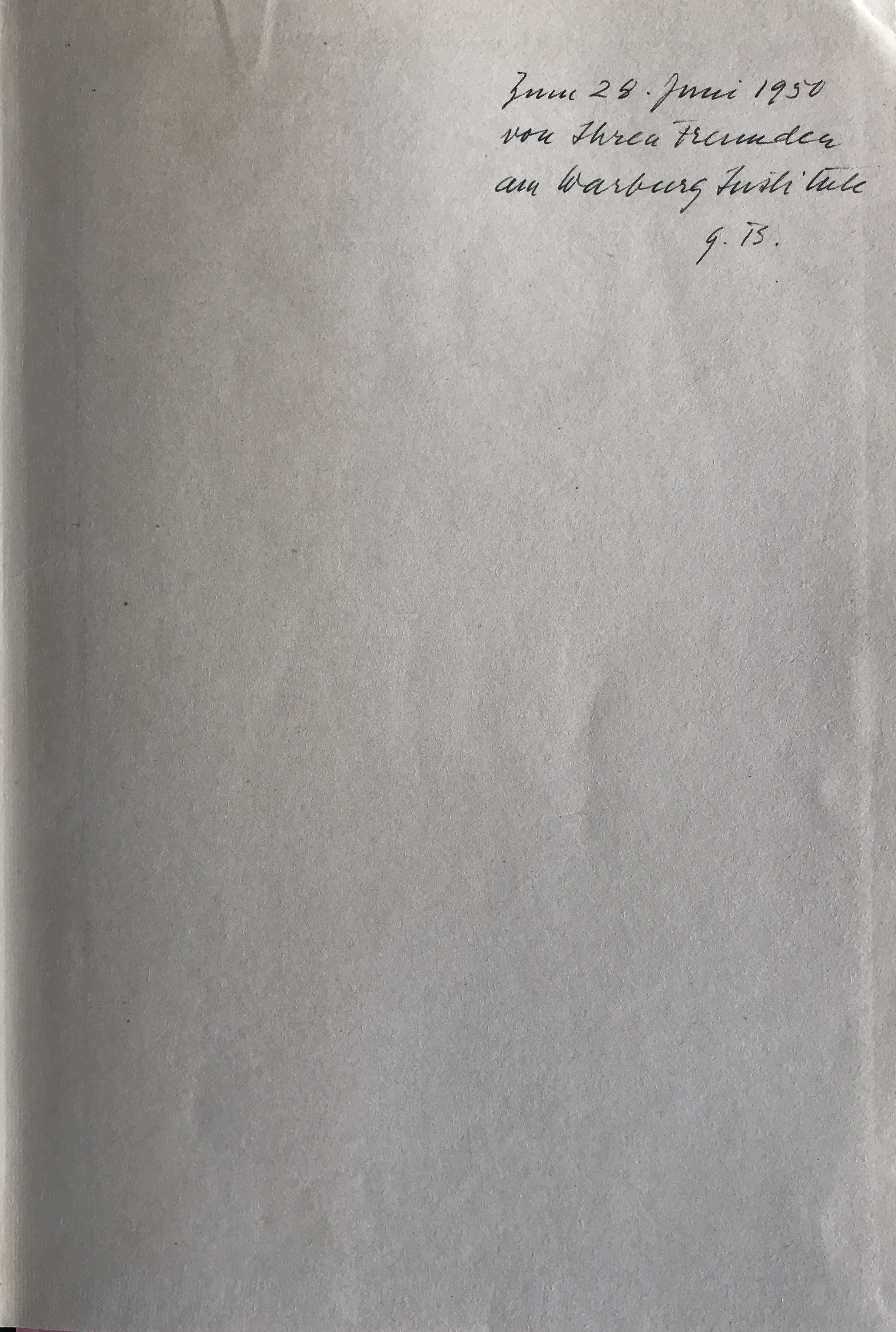
Ernst Gombrich’s The Story of Art, published with Phaidon Press in 1950, first page with dedication by G.B., probably Gertrud Bing from the Warburg Institute in London and a colleague of Gombrich (Staats- und Universitätsbibliothek Bremen, photo: Private Archive). It reads “On 29 June 1950 from your friends from the Warburg Institute G.B.”. 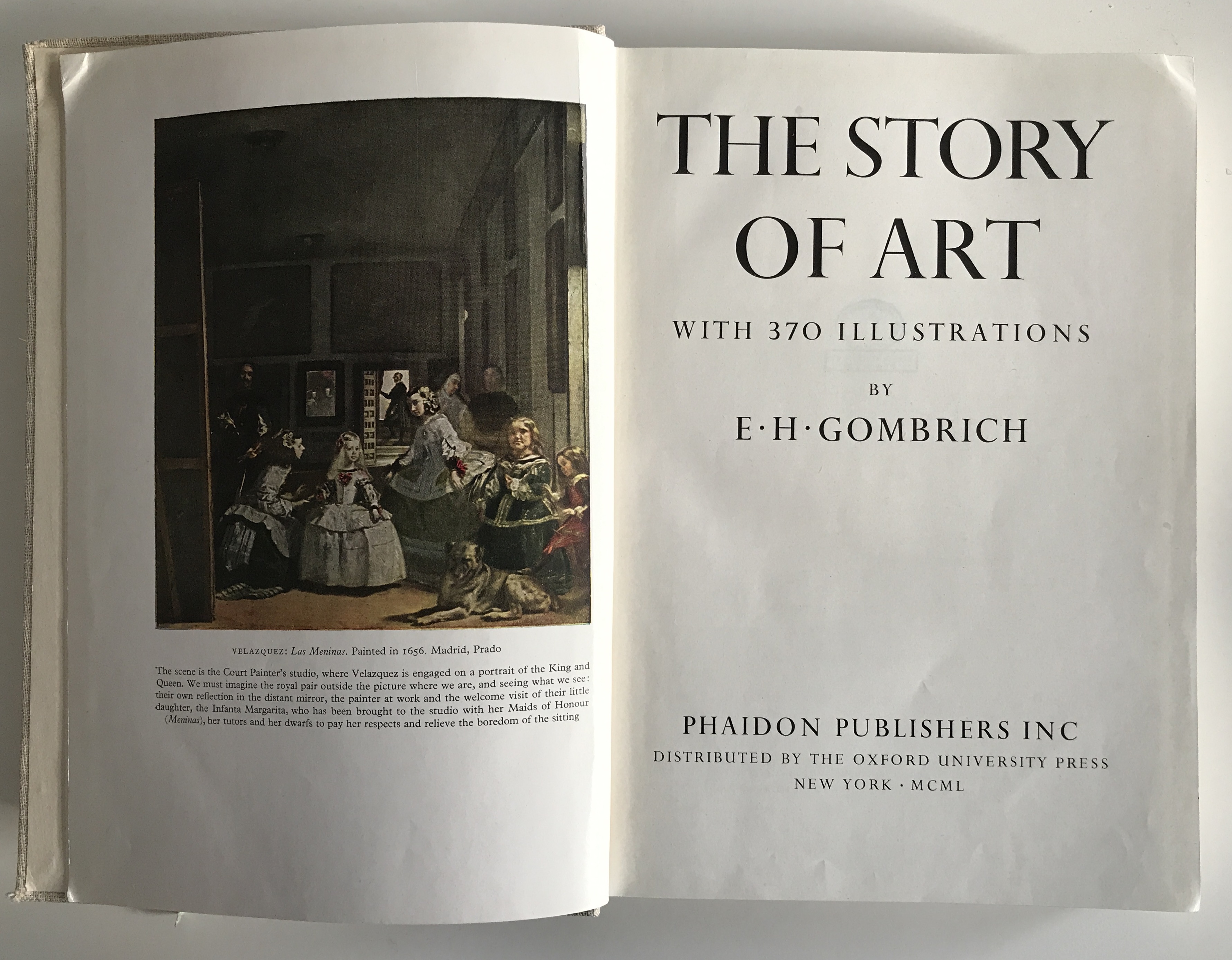
Ernst Gombrich’s The Story of Art, published with Phaidon Press in 1950, title page with Velazquez’s Las Meninas (Staats- und Universitätsbibliothek Bremen, photo: Private Archive). 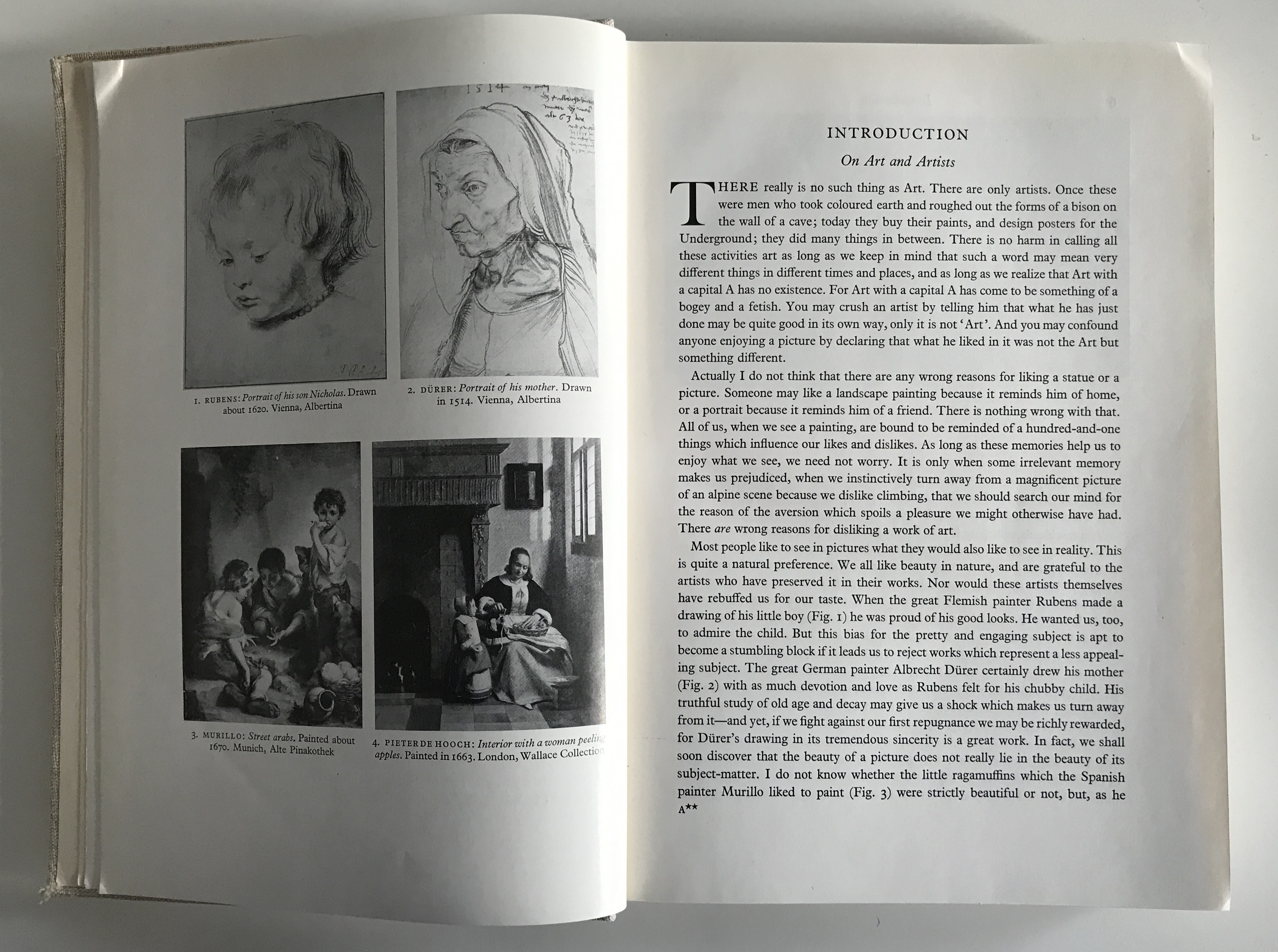
Ernst Gombrich’s The Story of Art, published with Phaidon Press in 1950: Introduction by the author (Staats- und Universitätsbibliothek Bremen, photo: Private Archive). 
Ernst Gombrich’s The Story of Art, published with Phaidon Press in 1950, p. 10–11: comparing Géricault’s Horce-racing at Epsom with a photo from 1948 (Staats- und Universitätsbibliothek Bremen, photo: Private Archive). 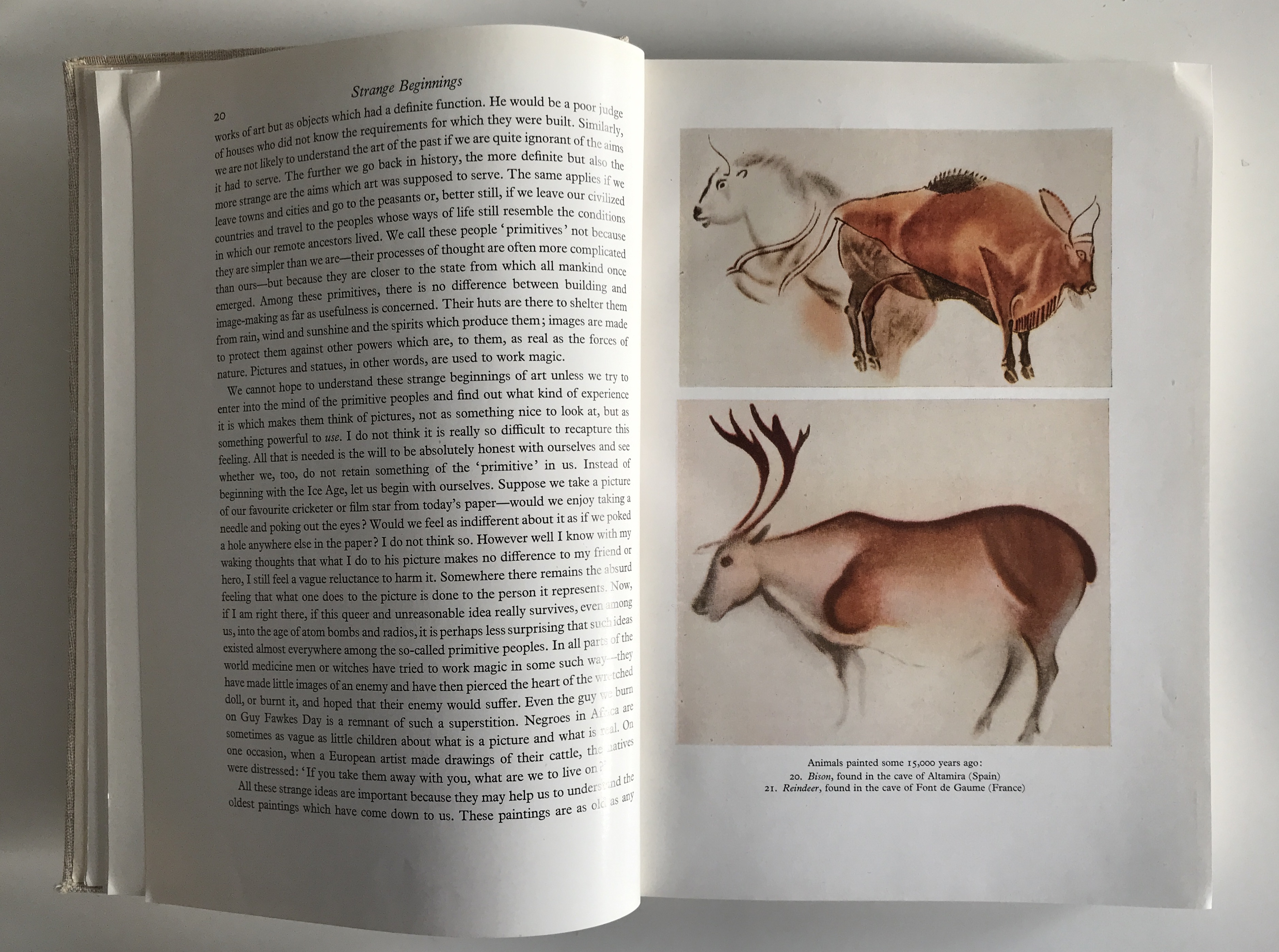
Ernst Gombrich’s The Story of Art, published with Phaidon Press in 1950, p. 20–21: reproductions of cave paintings in Altamira and Font de Gaume (Staats- und Universitätsbibliothek Bremen, photo: Private Archive). 
Ernst Gombrich’s The Story of Art, published with Phaidon Press in 1950, p. 102–103: looking eastwards (Staats- und Universitätsbibliothek Bremen, photo: Private Archive). 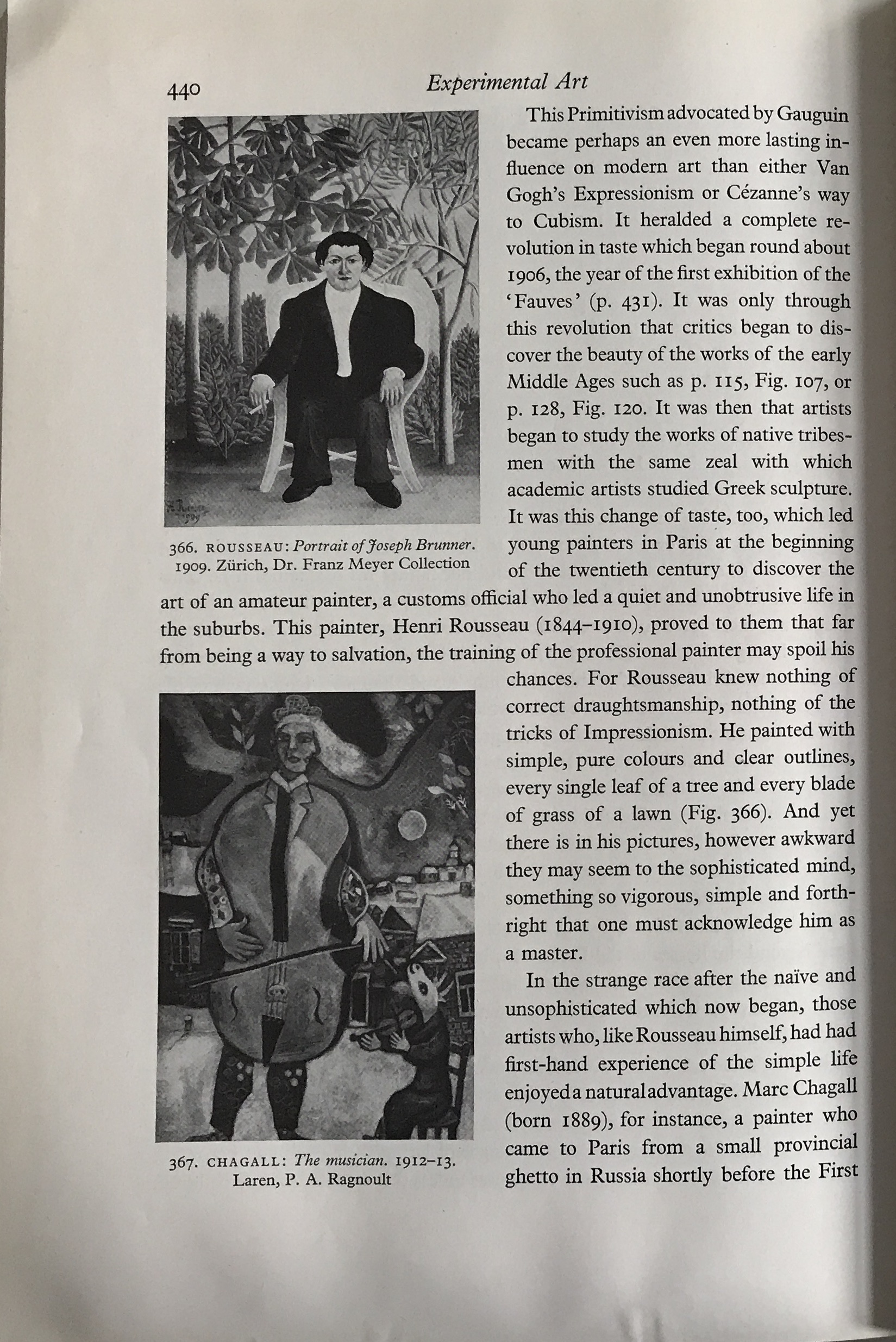
Ernst Gombrich’s The Story of Art, published with Phaidon Press in 1950, p. 440: reproduction of Henri Rousseau’s Portrait of Joseph Brunner, 1909, and Marc Chagall’s The Musician, 1912–13 (Staats- und Universitätsbibliothek Bremen, photo: Private Archive). Gombrich, Ernst. Weltgeschichte von der Urzeit bis zur Gegenwart. Steyrermühl Verlag, 1936.
Gombrich, E.H. [Ernst H.]. The Story of Art. Phaidon, 1950.
Gombrich, Ernst H. Aby Warburg. An Intellectual Biography. Warburg Institute, 1970.
Gombrich, E.H. [Ernst H.]. A Little History of the World. Translated by Caroline Mustill, Yale University Press, 2005.
Gombrich, Ernst, and Didier Eribon. Looking for Answers. Conversations on Art and Science. Harry N. Abrams, 1993.
Holman, Valerie. “Art Books Against the Odds: Phaidon in England 1938–1950.” Visual Resources. An international journal on images and their uses, vol. 15, no. 3, 1999, pp. 311–329. Taylor & Francis Online, doi: doi.org/10.1080/01973762.1999.9658513. Accessed 7 March 2021.
Kris, Ernst, and Ernst H. Gombrich. Caricature (The King Penguin Books, 5). The King Penguin Books, 1940.
Lepsky, Klaus. Ernst H. Gombrich: Theorie und Methode. Böhlau, 1991.
Nyburg, Anna. Émigrés. The Transformation of Art Publishing in Britain. Phaidon, 2014.
Nyburg, Anna. “Émigré Art Publishers.” Insiders Outsiders. Refugees from Nazi Europe and their Contribution to British Visual Culture, edited by Monica Bohm-Duchen, Lund Humphries, 2019, pp. 115–119.
Rose, Louis. Psychology, art, and antifascism: Ernst Kris, E. H. Gombrich, and the politics of caricature. Yale University Press, 2016.
Rosen, Valeska von. “Ernst H. Gombrich (1909–2001).” Klassiker der Kunstgeschichte, 2: Von Panofsky bis Greenberg, edited by Ulrich Pfisterer, Beck, 2008, pp. 175–185.
Word Count: 198
- London
- Burcu Dogramaci. "The Story of Art." METROMOD Archive, 2021, https://archive.metromod.net/viewer.p/69/1470/object/5140-11259846, last modified: 12-05-2021.
-
A Hundred Years of Photography 1839–1939BookLondon
Six years after her arrival in London, the photographer Lucia Moholy published her book A Hundred Years of Photography 1839–1939, on the occasion of the centenary of photography.
Word Count: 27
Visual Pleasures from Everyday ThingsBookletLondonVisual Pleasures from Everyday Things is a booklet written in 1946 by the emigrated architectural historian Nikolaus Pevsner with the aim of aesthetic education and teacher training.
Word Count: 26
Thames & HudsonPublishing HouseLondonThe emigrants Eva Feuchtwang (later Eva Neurath) and Walter Neurath founded the Thames & Hudson publishing house in 1949, which published art history books, photo books and collection catalogues.
Word Count: 28
The Warburg InstituteResearch InstituteLondonThe Kulturwissenschaftliche Bibliothek Warburg in Hamburg achieved a new presence in London after 1933 under the name The Warburg Institute as a research institution with a library and photo archive.
Word Count: 29
Focus on Architecture and SculptureBookLondonFocus on Architecture and Sculpture by émigré photographer Helmut Gernsheim brought together his work and experience as a photographer for the National Buildings Record (NBR).
Word Count: 25